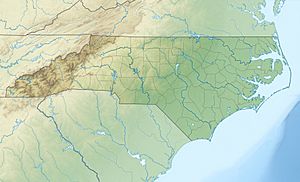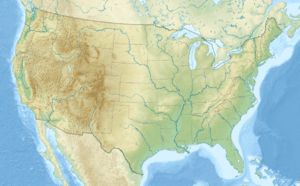Coles Branch (Crabtree Creek tributary) facts for kids
Quick facts for kids Coles Branch |
|
|---|---|
|
Location of Coles Branch mouth
|
|
| Other name(s) | Tributary to Crabtree Creek |
| Country | United States |
| State | North Carolina |
| County | Wake |
| City | Cary |
| Physical characteristics | |
| Main source | divide between Coles Branch and Swift Creek Cary, North Carolina 416 ft (127 m) 35°46′59″N 078°48′19″W / 35.78306°N 78.80528°W |
| River mouth | Crabtree Creek Cary, North Carolina 305 ft (93 m) 35°48′10″N 078°50′02″W / 35.80278°N 78.83389°W |
| Length | 2.7 mi (4.3 km) |
| Basin features | |
| Progression | northwest |
| River system | Neuse River |
| Basin size | 2.60 square miles (6.7 km2) |
| Tributaries |
|
Coles Branch is a small stream, about 2.7 mi (4.3 km) long. It flows into Crabtree Creek in Wake County, North Carolina. It's known as a "second-order stream," which means it's a stream formed when two smaller, first-order streams join together.
Contents
Where Does Coles Branch Flow?
Coles Branch starts from a pond in the western part of Cary, North Carolina. From there, it flows mostly towards the northwest. Its journey ends when it joins Crabtree Creek.
The Area Around the Stream
The land around Coles Branch is called its watershed. This is the area where all the rain and water drain into the stream. Most of this watershed is developed, meaning it has many buildings, roads, and homes. Only a small part, about 7%, is still covered by forests.
Understanding the Coles Branch Watershed
The Coles Branch watershed covers an area of about 2.60 square miles (6.7 km2) in western Cary, North Carolina. This area is important because it collects all the water that feeds into Coles Branch.
Geology of the Area
Underneath the Coles Branch watershed is a geological area known as the Deep River Basin. This basin is a large area of rock formations that can affect how water moves underground.
Rainfall and Water Levels
On average, the Coles Branch watershed gets about 46.4 inches of rain each year. This rainfall is very important for keeping the stream flowing. The amount of water in the stream can change depending on how much rain falls.



